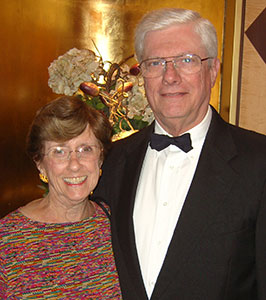
I am a member of the FAER Legacy Society, and FAER has given me an opportunity to share my personal history and some of my beliefs as well as the influences and the passions behind my philanthropy. In creating this Legacy Letter, I hope these stories provide some insights and inspiration to young doctors and peers about the power and importance of generosity.
I was born on December 20, 1936, in Canton, Ohio, the location of the Football Hall of Fame. Coincidently, Canton is my personal Hall of Fame because I met my wonderful wife Marilyn at a high school football game. She had just split up with her boyfriend. He fumbled and I scooped her up. We have been married for 57 blessed years. I call her “my trophy wife.”
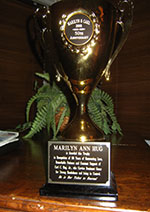 My father, Carl Hug, Jr., M.D., Ph.D., was a pharmacist and owned two drugstores in Canton. His pharmacies were called Hugs Drugs, and the motto on all prescription labels was “Hugs for Drugs”—which, of course, you couldn’t use today. Drug stores have changed over the years. Customers used to come in and ask for two packs of Camels and whisper, “Where can I get some rubbers?” Today customers come in and ask for a six-pack of condoms and whisper, “Where can I get some cigarettes?”
My father, Carl Hug, Jr., M.D., Ph.D., was a pharmacist and owned two drugstores in Canton. His pharmacies were called Hugs Drugs, and the motto on all prescription labels was “Hugs for Drugs”—which, of course, you couldn’t use today. Drug stores have changed over the years. Customers used to come in and ask for two packs of Camels and whisper, “Where can I get some rubbers?” Today customers come in and ask for a six-pack of condoms and whisper, “Where can I get some cigarettes?”
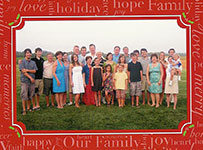
My father exposed me to pharmacy, but more important, he demonstrated integrity, diligence, and professionalism. He always said, “If there are two ways to do something, choose the more difficult. If you can handle the difficult situations consistently, then you’ll be in good shape for whatever comes your way in life.” I took his advice and found that when choosing the more difficult way, you get more information and have a better perspective of whatever you were trying to tackle. He taught me to be focused on what’s important in life and that honesty was very important. “You can only lose your reputation; you can’t buy it back.” He also taught me the value of delayed gratification: to work towards a goal that may require that you limit the benefits you receive right now for greater rewards later. That philosophy has served me well throughout my career.
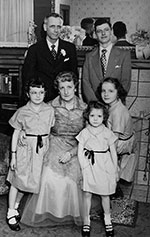
My mother, Aimee Cecilia McArdle, was a strong-willed person. She unabashedly told you what she thought and was a skilled fundraiser. I remember as co-chairperson for Canton’s sesquicentennial celebration, she would raise money from other merchants. One day, I went with her to a leather goods store owned by a friend. She asked the owner for a donation. He handed her a check. She looked at it and handed it back to him saying, “You ought to be ashamed of yourself. You can afford a hell of a lot more.” He went back and wrote a much more generous check.
My three sisters and I always felt that she had our backs. Once, in high school, I was standing with my hand on the post in the high school theater next to Marilyn, and the nun who was directing the annual class play thought I had my arm around her. She threw me out of the play. My mother went charging over to Central Catholic High School and had me reinstated.
Her advocacy influenced me. Now I watch our children’s backs. Whenever my wife and I can help them, we do so with financial and emotional support. I see my five adult children standing up for their children as well; and when they do, I sometimes smile and think about my mother’s advocacy.
Some of my success professionally can be traced back to my mother’s legacy of advocacy. I was never afraid to speak my mind or make waves when I believed in something or someone. I think the reason I was chosen for certain boards and committee work is because people knew I would speak-up and get whatever job needed to be done done.
My mother had a tough exterior, but she was also kind and compassionate. She would take food and clothing to families of limited means. She and my father taught me the importance of generosity, and I have tried to express that generosity throughout my life through my philanthropy, church work, and volunteering my medical services in impoverished communities such as those in Jamaica.
Two other family members have influenced me about community service and charity. My mother’s two sisters were Notre Dame Nuns. One was Sister Marguerite, a nationally known teacher and author. The other was Sister St. Philip, who always jumped in and helped anybody in need at any time. You could see the compassion that she had as both a nun and as a registered nurse. Sister Marguerite wrote readers for Catholic elementary schools. She also founded the first school for disabled children in Cleveland, Ohio. She successfully raised funds to create an endowment, which allowed the school to continue to operate in perpetuity.
Both demonstrated the importance of community service and charity, and they lived active lives and kept up with the daily news into their late 80s. They showed me the importance of keeping your brain active, having responsibility for others, and having something to get up for each morning. I do volunteer teaching about medical ethics as a way to give back and to ward off dementia as best I can.
Besides my family, my Catholic faith inspires me towards sharing with those that are in need. I’m a fan of Pope Francis. He does not obsess over rules and regulations but deals with what Jesus Christ focused on—treating the poor and sick.
I favor the motto of Catholic Relief Services: “We teach persons to fish, we don’t give them fish.” The greatest need is to help people help themselves and to provide opportunities for advancement. My whole career is based on taking advantage of appropriate opportunities that came around.
My grandfather, Casimir Killian Hug, was in the pharmacy profession. He was a partner in Roth & Hugs Drugs, which had nine stores, but they lost all of them during the great depression. My father and my uncle eventually bought two of them out of receivership. It was a difficult time for everyone; even the employees took goods home without paying for them just to survive.
Since then, our family has always lived frugally and planned for a rainy day. I don’t mind missing making another dollar, but I don’t want to lose one for which I’ve already worked. Through relatively conservative investments and simple estate planning, I was able to create three IRAs—each of which goes first to my wife as the primary beneficiary and then to IRS qualified charities as secondary beneficiaries such as FAER. That is an effective strategy to give money away, minimize your estate taxes, and avoid annual reporting to the IRS.
Survivor insurance policies are in two trusts: one for our 5 children and another for our 12 grandchildren. The trusts avoid estate taxation and replace the money that our children would have received from our estate when both my wife and I are dead. In the meantime, each beneficiary can borrow against their equal share of the policy for worthwhile purposes specified in the trusts. Careful financial planning supported by reliable advisors allows us to support our children and grandchildren, and to donate to organizations we believe in, such as the American Red Cross, Doctors Without Borders, Catholic Social Services, and our church as well as to FAER.
“I hope Marilyn’s and my planned gift to FAER helps preserve and enhance anesthesiology’s standing among medical specialties and attract talented young physicians to this specialty.”
I hope Marilyn’s and my planned gift to FAER helps preserve and enhance anesthesiology’s standing among medical specialties and attract talented young physicians to this specialty. I think it is critical to support junior faculty in developing their academic careers in anesthesiology teaching and research. Otherwise, there is the risk that departments of anesthesiology will change to departments of anesthesia services. It has always been a challenge for anesthesiology to compete for research grants with other medical specialties. Support for research on patient safety has enhanced our profession while reducing medical errors, injuries, and death rates linked to anesthesia as well as malpractice risks. FAER supports development of qualified investigators who can study all aspects of anesthesiology.
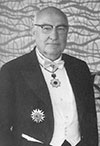
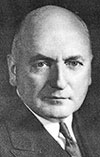
I am very grateful to all the people and institutions in my life that have steered me into a satisfying medical career. I became motivated to do well in school when I started carpooling to high school with a good family friend and neighbor, Dr. Reno, and his two sons Tommy and Ed. They were both good students, and they challenged me to be as successful as possible in academics. Before their challenge, I almost flunked Latin because I was more interested in working in a gas station.
I chose to become a pharmacist because I wanted to marry my high school sweetheart, Marilyn, and was assured of a job in Hug’s Drugs. We married after my sophomore year in college.
Dr. Hugh C. Muldoon, dean of the Duquesne University School of Pharmacy, inspired me to become a teacher as I listened to his lectures. I thought: “Now that is a way to earn a living.” To earn money in the meantime, I cleaned animal cages at Duquesne. Then I was given the opportunity to conduct experiments according to the professors’ protocols. The pharmacy faculty said I must get a Ph.D. to become a faculty member.
Dean John Adams followed Dean Muldoon. He encouraged me to get a Ph.D. degree because I was interested in teaching pharmacology. He directed me to five medical schools. The first one I visited was the University of Michigan in Ann Arbor. After visiting the pharmacology department and meeting its chairman, I no longer needed to visit any other universities. I was sold on the U of M.
Maurice Seevers was chair of the Department of Pharmacology at the U of M. He had both M.D. and Ph.D. degrees. Doctor Seevers believed that if you’re going to teach pharmacology to medical students and physicians, you had to go to medical school. You needed to be able to apply pharmacology to real life situations. Dr. Severs linked me with an American Cancer Society program that made it possible for me to go to medical school and support my wife and three kids. My Ph.D. was awarded in 1963 and the M.D. in 1967.
We didn’t spend a lot, but we could scrape by. We bought regular milk and powdered milk and mixed the two to save money. We lived on $173 a month. A gracious family living in a farmhouse rented us an apartment upstairs for $100 a month including all utilities; that meant we had $73 for everything else. Two full carts of groceries cost less than $40 in those days. My parents paid for our auto and health insurance, the latter being much less expensive than the former. Everyone gave us only practical gifts.
I remember my wife and I had a pullout couch in the large living room and the three kids were in the single bedroom. We had only a shower in the apartment. When I would take a shower, Marilyn would pass the first baby in. I would wash and pass her out, take the next baby in and so on to the last one. It was like a car wash. When they were in school and were asked what their father did, the kids replied: “He goes to school just like us.”
Because I wanted clinical credentials to pursue clinical research, I entered the Department of Anesthesiology at Emory University as a resident-fellow in 1971 and taught pharmacology to medical students, residents, and anesthesia assistants while training to qualify for ABA certification in 1975. It turned out that I really relished patient care as well as research.
These are wonderful memories, and I am very grateful for the financial support I received. I know firsthand the value and importance of financial assistance. I would never have been able to pursue my Ph.D. and M.D. degrees if it wasn’t for the financial support I received from several foundations.
Half a century later, I am teaching medical ethics. I’m passionate about ethics. In 1999 I gave the Rovenstine Lecture at the annual meeting of the American Society of Anesthesiologists on the topic of “What we physicians can do versus what we should do.” The audience response was divided. Some said that the lecture expressed the ethical responsibilities of anesthesiologists to avoid facilitating inappropriate operations. Others said you’re nuts because if you refuse to anesthetize a patient, you jeopardize future referrals from the surgeon(s) and loss of income. I believe those anesthesiologists are basically technicians supporting surgeons who choose to operate on the organ system of their specialty training without regard to the overall well-being of the whole patient, who might decline the operation if given the full details to balance limited benefits against the high risks of poor outcomes with lingering disabilities (i.e., informed consent).
Patients have the right to refuse interventions. Consider the 82-year-old woman with diabetes and gangrene of her foot. She was fully competent and said that she could not imagine a leg amputation and learning to cope with a prosthesis at her age. She steadfastly refused the operation even knowing the risks of spreading infection, sepsis, and death. The surgeon pressed the anesthesiologist to sedate her and take her to the OR, but he refused to do so. The surgeon had what he believed to be the best interests of the patient, but he refused to respect her autonomy for making her own decision. We treated her with antibiotics and she went home.
I am hoping that young doctors will have a keen sensitivity to the patient’s view of a good life and their perspective about the balance of benefits and burdens of any medical or surgical intervention. Most often ethical dilemmas arise near the end-of-life when families want every possible treatment and the mentally competent patient simply wants to be left alone.
Professionalism and ethical practice treats the whole patient. In our medical lingo, I used to say, “Here comes the heart.” I stopped saying that, and I tell students to say, “Here comes the patient with heart disease.” The patient has a whole life story behind him or her that influences the decisions that he or she has to make. You have to be attentive to that. Nowadays, many patients are forced onto an automatic medical conveyor belt and end up in medical purgatory.
I advise anesthesiologists to ask questions of the surgeons regularly. You get to understand their viewpoint. The surgeon gets to understand your perspective, and it reduces tension and disagreements. Most important, being more involved with your surgeon creates better outcomes for your patients and can lead to good professional and personal relationships. Today medicine is a team sport. It’s very important to recognize you can’t practice medicine alone. You need cooperation and support from all kinds of people, including the patient.
To newly certified doctors, I say that this is not the end of your learning. You have to be committed to lifelong learning in order to be the very best doctor you can be. It will also keep you on the straight and narrow to avoid malpractice claims and suits.
Professional and personal satisfaction comes from that delicate and difficult balancing act between family and your career. Spend time, pay attention, and get involved with your family. The family is number one because when you finish your professional career, that’s whom you will spend the rest of your life. And remember, they may be the ones choosing your nursing home.
I’ve had a good career, and I want to see anesthesiology thrive as a specialty. We’re on the low-end of the scale for specialties that get NIH and other grants. I want to see us advance. I take pride and hope in the success of anesthesiology as the specialty. FAER is dedicated to that goal.
Carl C. Hug, Jr., M.D., Ph.D.
February 21, 2014
© Pentera, Inc. Planned giving content. All rights reserved.
Disclaimer